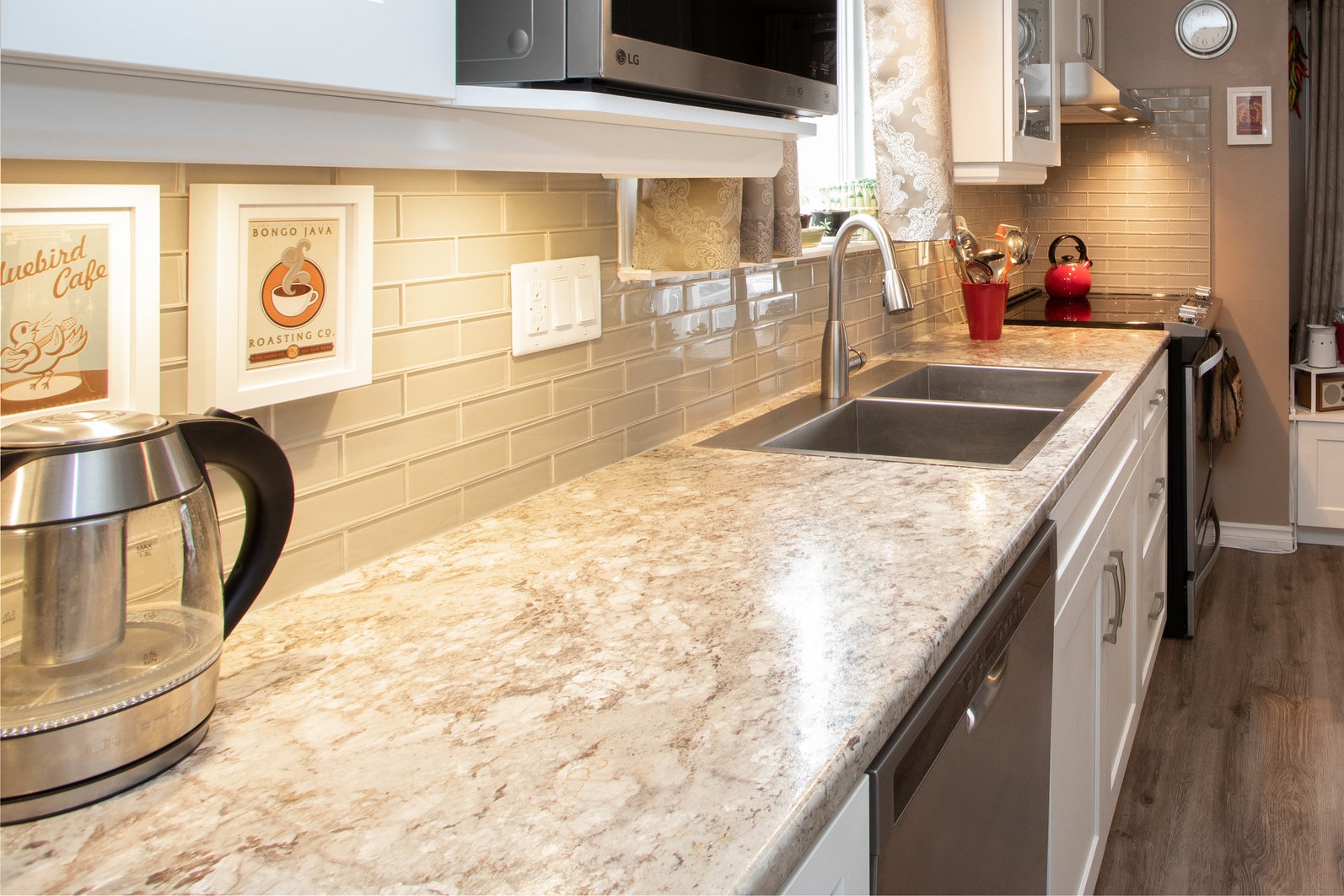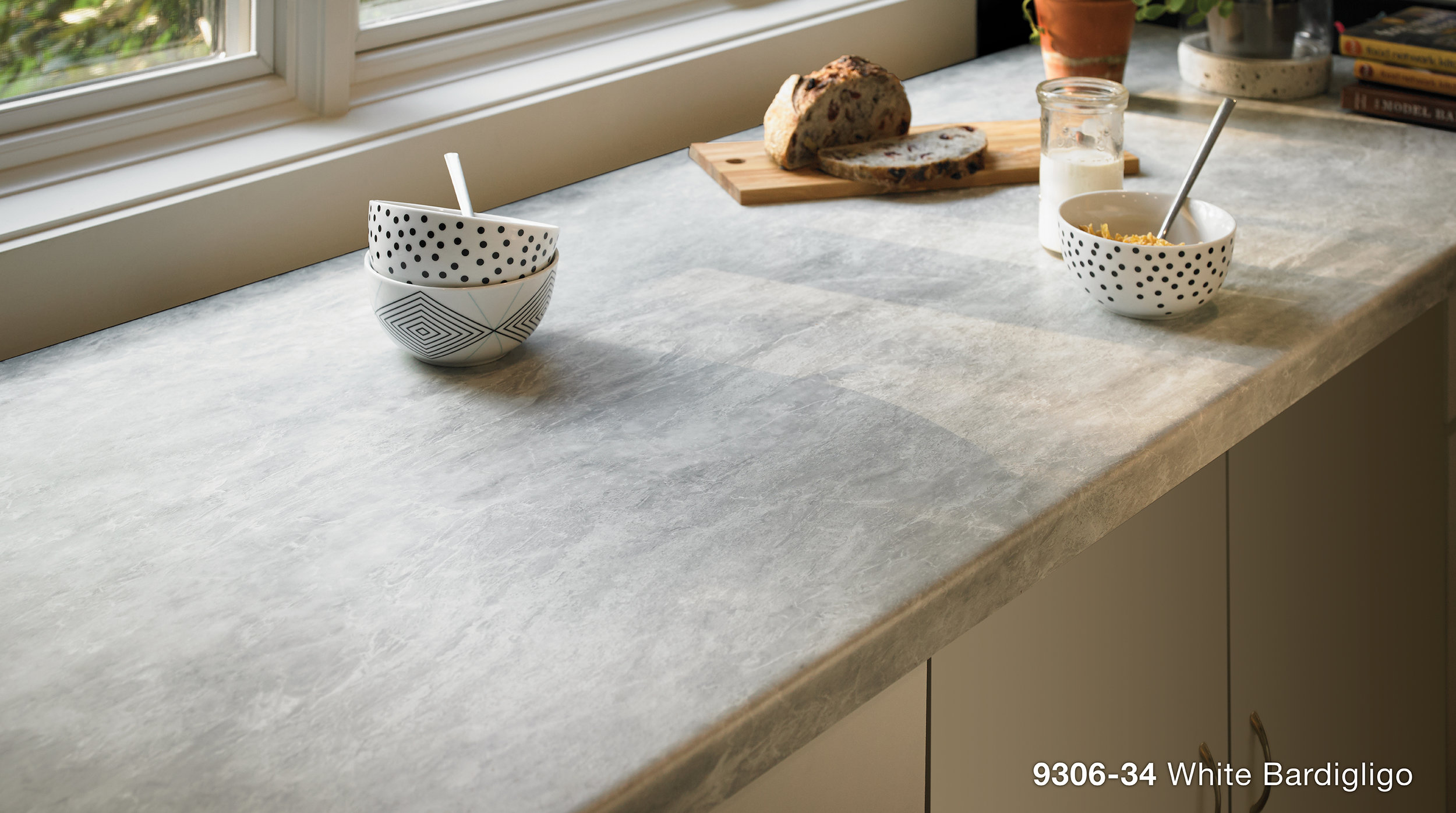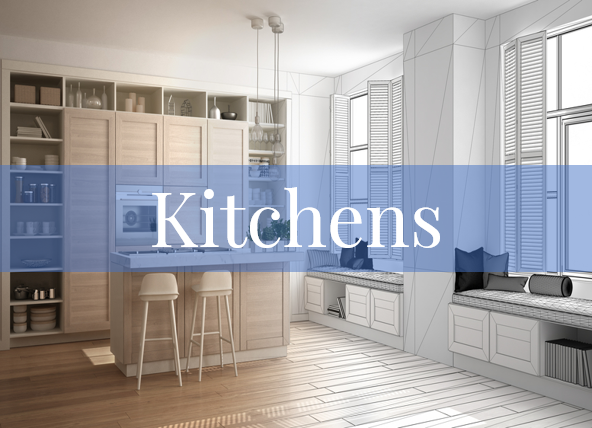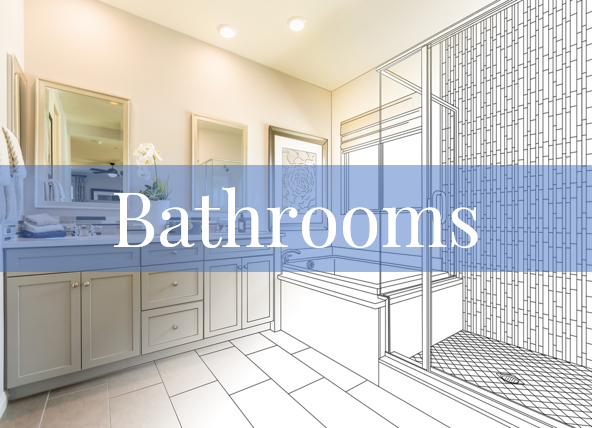Are Laminate Countertops Making a Comeback?
/If you are between 30 and 60 years old, you probably grew up with a white laminate kitchen countertop with orange flowers on it. Or did the countertop at your home have multicoloured flecks and gold sparkles in it? Visions of those horrid countertops still send shivers down my spine!
Prefer to listen?
Not Your Grandma’s Countertop
Today’s laminate countertops definitely aren’t like your grandma’s countertops anymore! Laminate is making a comeback and is being used more and more these days because of its improved design and style. Today’s laminate looks more like natural stone, and because of improved printing techniques and designers who are creating better recreations of stone, laminate has made a dramatic comeback.
Laminate countertops now mimic the look and feel of stone. Gone are the backsplashes and sidesplashes with countertops sliding straight in to meet up with the walls. This allows a beautiful tile backsplash to be installed right down to the counter. Laminate countertops create a chic look at a fraction of the cost of stone. At 1/4 to 1/2 the cost of a natural stone countertop, you can afford to select a bold and trendy countertop and change it out 5-8 years later if it’s out of date.
History of Laminate
Formica® laminate was invented in 1912 by Westinghouse electrical engineers Daniel J. O'Conor and Herbert A. Faber. They discovered that high-pressure plastic resins could be used to make electrical parts, replacing the mineral mica, thus the name Formica.
Formica originally consisted of layers of fabric bound together with resin; later, it was made with thick pieces of paper laminated with melamine. This tougher substance could resist heat and abrasion, while the paper opened up a wealth of possibilities for printing colours and patterns, which proved key to its success.
By 1930, the Company had begun to make the shift from industrial applications to decorative laminate products. Colourful, durable, and cigarette-proof, laminate has become a popular choice for the interiors of cafes and nightclubs, as well as railway cars and luxury ocean liners like the RMS Queen Mary. When the U.S. entered World War II, The Formica Insulation Company focused on military production until the war’s end.
In the 1950s, it was actually considered a luxury item. However, by the 1970s, consumers no longer wanted synthetic materials. Today, Formica and Wilsonart are the two most popular brands of laminate countertops.
Creating a Stone Look
One of the reasons laminate is making a comeback is because the new designs look so much like stone. Designers of laminate can now scan a piece of a stone slab from different angles to create a large digital file. Printers then build layers with translucent inks that mix colours to create a realistic product.
Laminates now have different textures as well. Matte finishes are soft with a silky finish. Embossing is another popular finish that creates little pits like what you’d see in stone. Finishes like these give laminate counters not only the look but also the feel of stone countertops.
Disadvantages of Laminate
Although there are many advantages to laminate countertops, there are still some disadvantages to consider.
No matter how hard manufacturers try to make laminate countertops strong and durable, they can still scratch. They are resistant to small scratches, but they can become gouged and chipped.
Although some laminates can resist heat up to 400 degrees, heat can also damage them. It can cause warping or cloud the colour.
The seams tend to be more noticeable on laminate than on stone countertops.
Laminate countertops just have the top layer of colour and design, which means any chips or gouges will reveal the underside of the laminate.
Undermount sinks are popular these days, but they cannot be used with laminate countertops. There are some places that claim you can use an undermount sink with a laminate countertop, but I have some serious reservations. There is now an exposed edge coming into direct contact with water. Every. Single. Day. My experience tells me that over time, you can expect mildew to form along that edge and that the laminate will eventually peel away.
The resale value is not as good for laminate countertops.
Advantages of Laminate
Laminate is DIY-friendly. I would never encourage anyone to install their own quartz countertop, but if you have some skill and are comfortable with it, laminate lends itself to DIY.
Laminate is definitely cheaper at 1/4 to 1/2 the cost of natural stone. This frees up funds that can be spent elsewhere on your renovations.
Laminate is a lot easier to cut, making it cheaper to install if you need to pay the pros to install it for you.
It’s easy to care for with wipe-clean care. Here is a link to Formica’s Laminate Cleaning Guide
If properly cared for, laminate can have a 20-year life span.
Both of the most popular brands of laminate countertops, Formica and Wilsonart, sell products with antimicrobial protection baked into them. This doesn’t mean that you can leave raw chicken on the countertop, but it does help kill some of the invisible pathogens that make us sick. Hospitals and commercial kitchens have been relying on technology like this for decades to help reduce the spread of germs and cross-contamination.
I’ve become a big fan of laminate countertops, largely for three reasons:
Cost. I can save a bundle by putting in a laminate countertop, which frees up money to fix up more of my house.
Look of stone at a fraction of the cost. I love the look of stone countertops, but if I can achieve a similar look for much less, then it’s a no-brainer for me.
Not cold to the touch. I hate how cold natural stone feels. If I’m in a restaurant with a stone table, I hate resting my arms on it because it’s just so cold on the skin. It seems so uninviting to me.
This is just my preference and reasons for opting for laminate, but in the end, I always suggest that our clients make decisions based on two facts:
What do you truly prefer?
What can you afford?
My father always taught me that no matter what you purchase, buy the best-quality product you can afford so that you only buy it once. If your budget allows and you prefer a stone countertop, then go for it. Consider all of your options, their pros and cons, and then make the decision that’s right for you.
Are you looking for more design tips, renovation advice, home maintenance suggestions, and more? Sign up for our bi-monthly newsletter below. All we need is your email address, and you can unsubscribe at any time.























